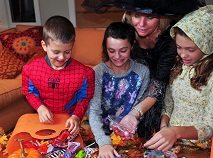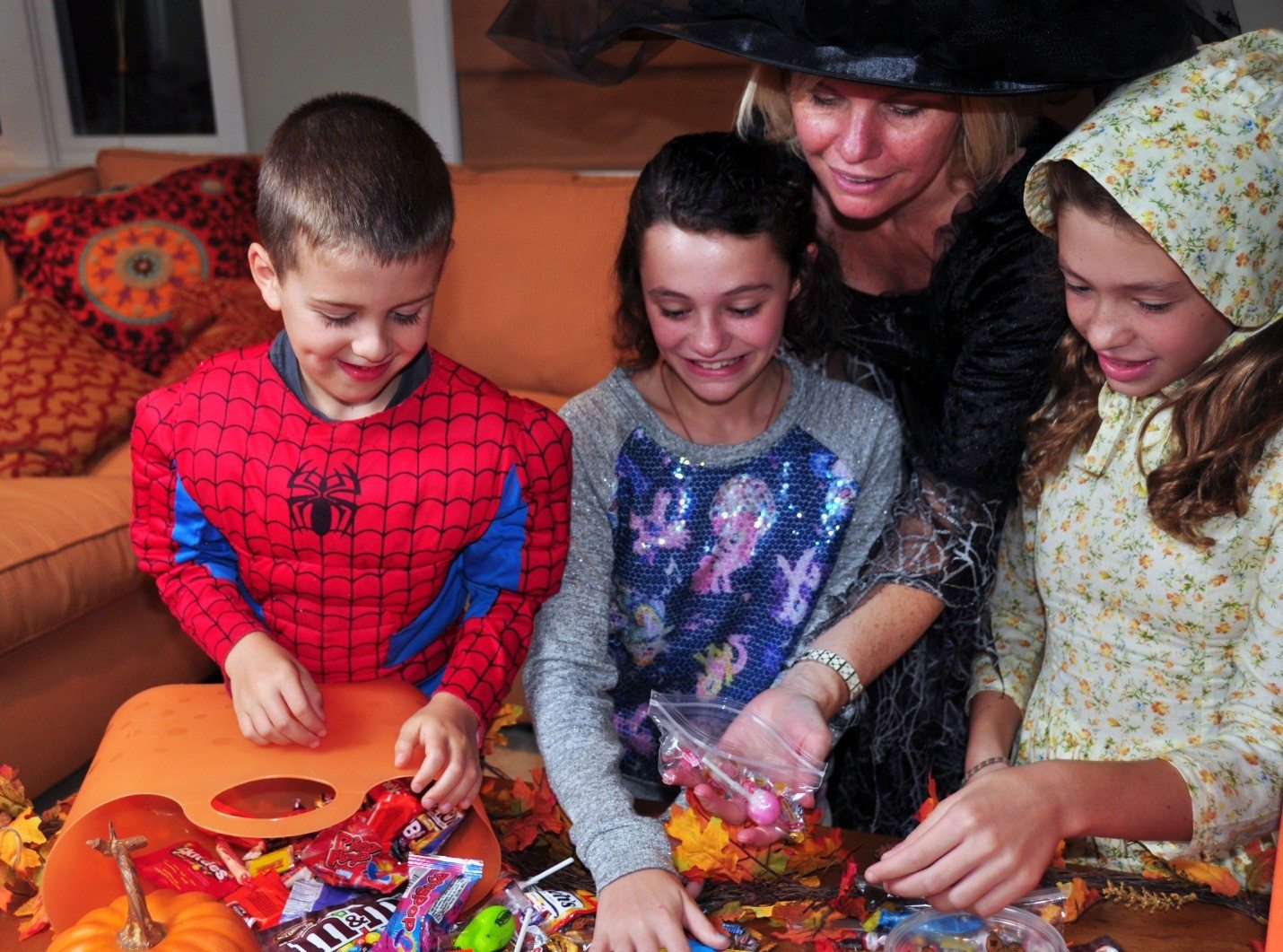Now, About All That Candy…

Well, it’s over. Halloween has come and gone for another year. Time to put away the plastic jack-o-lanterns, take down the make-shift graveyard you constructed for the front yard, and try your best to get the overly large cobwebs from the front hedge.
Once all that is done, there’s still the matter of all that candy. In the National Confectioners Association’s recent consumer survey, 81 percent of parents said that they use some technique to moderate their kids’ candy consumption after the holiday. Some (40 percent) limit their child’s consumption to “a couple of pieces a day” until the candy runs out. About a quarter (23 percent) say they take responsibility for the candy and dole it out as they feel is appropriate. Another 13 percent of parents limit consumption to a certain number of pieces in total and take the rest away. Finally, five percent of very diligent nutrition label readers say they have a general sense of the amount of calories they are comfortable with their children consuming and pick out an appropriate amount for that range.
Have you read food sociologist Dina Rose’s blog post about how she handles Halloween candy with her daughter? It’s a few years old, but right on point. “Halloween is a great holiday,” she says. “It’s communal, silly and thrilling. It’s also filled with candy. No wonder kids enjoy it! This year, instead of worrying about the sugar, think about the lessons you want your kids to learn. It’s a strategy that pays off.”
What does she mean, exactly? Well, consider this point she makes:
If 5 percent of all candy is consumed around Halloween, then 95 percent of all candy consumption happens during the rest of the year. In other words, when it comes to candy, Halloween isn’t where the action is.
Basically she means that if you teach your kids good nutrition habits YEAR ROUND and you don’t have to worry so much about Halloween. Your children will continue to make good decisions, with occasional reminders and small interventions (come on, they ARE still kids, after all).
As I was posting my own Halloween pictures to Facebook last night, I saw that lots of other moms were posting pictures of their little Elsas and Teenage Mutant Ninja Turtles posed with substantial candy collections. I asked one of them to share her techniques for moderating candy with me. Kristie is a smart mom who knows that trick-or-treating is fun, but that it’s also her responsibility as a mom to teach good nutrition habits all year long.
“I engage the kids in decisions about the Halloween candy,” Kristie told me. “Halloween night they love to dump it all out and look at their loot to see how much they scored. Then they will inevitably ask us how much they can have. I usually ask them how much they think is fair to eat at night before bed when it’s late and they have school in the morning. Last night they decided on two small pieces each.”
Yes! Smart choice, kids.
About the National Confectioners Association (NCA) – The National Confectioners Association is the Washington, DC-based trade group representing the $34 billion U.S. confectionery industry and comprised of 320 member companies that manufacture and market the vast majority of chocolate confectionery, sugar confectionery and gum sold in the United States, 225 companies who supply those manufacturers and 115 brokerage companies who serve as third party sales agents for manufacturers. Serving as the voice of the industry, NCA advocates for a pro-business policy agenda, helps the industry understand and implement food safety and other regulations, provides information to help members strengthen their business in today’s competitive environment and fosters relationships between all sectors of the industry. There are confectioners in all 50 states employing approximately 70,000 Americans in more than 1,000 facilities across the U.S. Candy is a special treat that represents a small portion of the calories in the average American diet, making up roughly 2 percent of the average person’s caloric intake.
Want more healthy habits articles? Check out these other posts on our blog!

